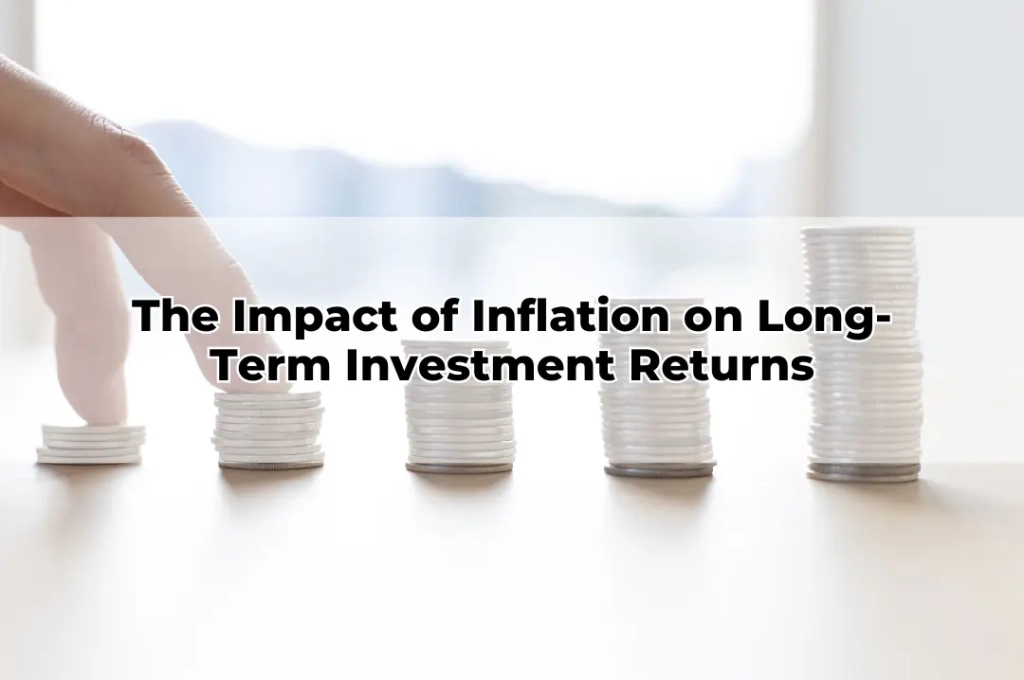The Impact of Inflation on Long-Term Investment Returns
Table of Contents
ToggleInflation, often viewed as an economic inevitability, quietly eats away at purchasing power, slowly but surely undermining the value of money. For investors, especially those focused on long-term outcomes, inflation is not merely a macroeconomic statistic-it is a persistent threat to real returns. Without deliberate financial planning, the compounding effects of inflation can diminish investment portfolios over time, particularly for retirees reliant on fixed income. In the context of wealth creation and preservation, understanding and mitigating inflationary impacts is crucial. As a Toowoomba Financial Adviser, addressing this challenge is a core component of building resilient financial strategies.
Understanding Inflation
Inflation refers to the general rise in the price levels of goods and services over time. It is primarily driven by two core factors: demand-pull inflation, where consumer demand outpaces supply, and cost-push inflation, triggered by increasing production costs. Other influences include monetary policy, currency valuation, global supply chains, and geopolitical tensions. Central banks, such as the Reserve Bank of Australia (RBA), target a modest inflation rate to sustain economic stability. However, when inflation escalates beyond expectations, it distorts market behaviours, reduces consumer confidence, and compromises future purchasing power. For long-term investors, it’s essential to grasp the mechanisms that feed into inflation to better counteract its effects through diversified strategies and informed financial planning.
The Real Return vs. Nominal Return Distinction
Investors often focus on nominal returns-the raw percentage growth of an investment. However, real returns paint a truer picture by adjusting for inflation. For example, a 6% nominal return in an environment of 3% inflation equates to a real return of just 3%. This reduction has profound implications over decades of compounding. Ignoring the inflation factor may lead to an overestimation of wealth growth, distorting expectations and derailing retirement plans. Accurate financial projections must incorporate real returns to ensure that income streams, particularly in retirement, maintain their true value over time. Effective Retirement Financial Advice always considers this nuance in portfolio structuring.
Compounding and Inflation: The Unseen Adversary
Compounding is often heralded as an investor’s greatest ally, but inflation can silently diminish its benefits. While compound interest grows investment capital over time, inflation concurrently reduces the real value of those gains. Consider a portfolio compounding at 5% annually in a 2.5% inflation environment; the actual compounding effect is halved. Over multi-decade horizons, this erosion becomes significant. The longer the investment term, the more pronounced the disparity between nominal and real returns. Financial Planning Toowoomba involves modelling inflation-adjusted outcomes to ensure that future financial goals, such as retirement income or legacy planning, remain viable under different inflation scenarios.
Inflation’s Varying Impact on Different Asset Classes
Not all asset classes respond to inflation uniformly. Fixed income investments like bonds often suffer, as their payouts become less valuable over time. Conversely, real assets such as property, infrastructure, and commodities tend to outperform in inflationary periods, due to their intrinsic value and ability to reprice. Equities may offer a buffer, especially those linked to essential goods and services, but they are not immune to margin compression from rising input costs. Diversifying across asset classes is a prudent way to counterbalance inflation risk. As an Online Financial Adviser, tailoring portfolio allocations to incorporate inflation-resistant assets is essential for preserving purchasing power.
Property Investment and Inflation: A Strategic Hedge
Australian real estate has historically served as a natural hedge against inflation. Property values and rental income generally rise in line with or ahead of inflation, offering dual protection-capital appreciation and income growth. In regional centres like Toowoomba, property investment remains attractive due to strong demand fundamentals and limited supply constraints. However, rising interest rates-often used to combat inflation-can dampen short-term housing affordability and borrowing capacity. Effective Financial Planning Toowoomba includes evaluating property as part of a broader asset allocation strategy, balancing leverage, liquidity, and long-term income potential to enhance inflation resilience.
Shares and Inflation: Volatility and Opportunity
Equities offer mixed performance in inflationary periods. While corporate earnings can rise with inflation, higher input costs and interest rates may erode profitability. Certain sectors-like energy, consumer staples, and utilities-tend to outperform due to pricing power. On the other hand, growth stocks, particularly those with stretched valuations, often underperform as future cash flows are discounted more heavily. Investors should assess companies with strong balance sheets, low debt, and the ability to pass on costs to consumers. Active portfolio management, grounded in economic fundamentals, is key. As a Toowoomba Financial Adviser, I advise clients to revisit equity allocations with an inflation-aware lens.
Bonds and Fixed Income: Navigating Inflation Risks
Fixed income instruments, especially long-duration bonds, are particularly vulnerable to inflation. As the cost of living rises, the fixed interest payments lose purchasing power. Inflation-indexed bonds, such as Treasury Indexed Bonds in Australia, provide a more resilient alternative by adjusting returns based on the Consumer Price Index (CPI). Additionally, incorporating floating-rate securities or shortening bond duration can mitigate inflation risk. For income-focused investors, particularly retirees, inflation-aware fixed income strategies are vital to preserving lifestyle quality. Retirement Financial Advice must address this head-on by ensuring income-generating assets keep pace with rising living costs over the long term.
Superannuation and Inflation: Preserving Retirement Income
Superannuation is the cornerstone of retirement planning in Australia. Yet, without proactive management, inflation can significantly reduce its real value over time. Relying solely on default investment options may expose retirees to inflation shortfall risks. It is critical to assess super fund performance not just on growth, but also on how effectively it maintains purchasing power. Allocating across diversified, inflation-conscious portfolios within a Self-Managed Super Fund (SMSF) can offer greater control. Strategic rebalancing, risk calibration, and income-generating assets are central pillars of inflation-proofing retirement savings. As an SMSF Specialist Advisor, I guide clients in tailoring super strategies to their long-term inflation outlook.
The Role of International Investments in Inflation Management
Global diversification can enhance inflation resilience by tapping into economies experiencing different inflationary cycles. For instance, allocating capital to markets with stronger currencies, higher interest rates, or superior inflation control mechanisms can buffer domestic exposure. Moreover, international equities, infrastructure, and ETFs allow access to sectors and regions with inflation-hedging characteristics. Currency movements also play a role; a weakening Australian dollar during high domestic inflation can increase returns on offshore assets. As an Online Financial Adviser, incorporating international exposure is a strategic move to broaden investment resilience and mitigate localised inflation pressures.
Inflation and Retirees: Sustaining Income and Lifestyle
For retirees, inflation is more than a theoretical concern-it’s a tangible threat to lifestyle. Rising healthcare costs, energy bills, and essential services can quickly erode fixed income streams. Without inflation-linked investments or adaptive withdrawal strategies, retirees risk outliving their savings. Strategies such as laddered annuities, real estate income, and dividend-focused portfolios can create more inflation-resilient income. Furthermore, expenditure forecasting must adjust for realistic inflation assumptions, not just historical averages. In delivering Retirement Financial Advice, the focus must shift from simply preserving capital to preserving living standards throughout the entire retirement phase.
Inflation and Behavioural Finance: Avoiding Emotional Pitfalls
Inflation often triggers emotional responses-panic selling, shifting to cash, or chasing high-risk assets. These reactions, while understandable, frequently lead to suboptimal outcomes. Investors may misinterpret inflation-induced volatility as systemic risk, when it is, in many cases, cyclical. Anchoring decisions in disciplined, goal-based strategies is critical. Behavioural coaching is a crucial role for advisers, especially during inflationary spikes. As a Toowoomba Financial Adviser, providing calm, analytical perspectives helps clients stay the course, make rational adjustments, and avoid reactionary pitfalls that compromise long-term returns.
Conclusion
Inflation is an enduring economic force that can quietly sabotage even the most carefully constructed financial plans. Understanding its multifaceted impact across asset classes, investment vehicles, and personal circumstances is imperative. Crafting an inflation-resilient investment strategy involves more than reactive adjustments-it requires proactive structuring, dynamic management, and expert insight. For individuals seeking tailored advice, working with a Toowoomba Financial Adviser ensures that portfolios are positioned not only to grow but to preserve value in real terms. At Wealth Factory, we prioritise inflation-conscious planning as a foundational element of sustainable wealth creation and retirement security.









